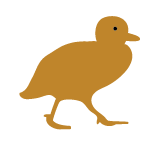This course explores core questions about modern armed conflict: What is war? What shapes does it take? What are its main drivers? What consequences does it have? How has it evolved over time? Who plays a role in it? Is it ever legitimate to wage war? Is the use of violence legal? What role does terrorism play? How do we build a sustainable peace? What are some of the challenges involved? How do we address them? How do we avoid war? How can we respond to mass atrocities? To do so, the course draws on various case studies and uses a multidisciplinary lens by building on the fields of International Relations, political science, strategic studies, anthropology, history, law, gender studies and psychology. By doing so, it introduces students to some of the key debates and concepts of the field of peace and conflict studies. Additionally, it gives them a robust foundation for further study, while allowing them to better understand current international affairs.
This course will be taught in Japan (in English) as part of the Bachelor of Asia Pacific Affairs.
Learning Outcomes
Upon successful completion, students will have the knowledge and skills to:
- Demonstrate a strong understanding of some of the key concepts and debates of the field of peace and conflict studies.
- Display a fuller appreciation of the multifaceted causes and consequences of violent conflict.
- Demonstrate a deep understanding of the complexity surrounding the concept of peace and some of the key pathways to achieve it.
- Gain a practical perspective on peace and conflict studies in the 21st century.
- Develop strong communication skills including oral and written skills.
- Develop critical analysis skills and critical reflexivity.
Indicative Assessment
- Tutorial Participation (10) [LO 1,2,3,4,5,6]
- Analysis of a reading (oral presentation) (10) [LO 1,2,3,5,6]
- Research essay (2,000 words) (40) [LO 1,2,3,4,5,6]
- Final Exam (40) [LO 1,2,3,5,6]
The ANU uses Turnitin to enhance student citation and referencing techniques, and to assess assignment submissions as a component of the University's approach to managing Academic Integrity. While the use of Turnitin is not mandatory, the ANU highly recommends Turnitin is used by both teaching staff and students. For additional information regarding Turnitin please visit the ANU Online website.
Workload
This course comprises some 130 hours of activity over 12 weeks, including some 24 hours of lectures or an equivalent activity and some 12 hours of tutorials or equivalent activity. The course comprises a maximum of 6k words of assessment or the equivalent.
Requisite and Incompatibility
Prescribed Texts
TBA
Fees
Tuition fees are for the academic year indicated at the top of the page.
Commonwealth Support (CSP) Students
If you have been offered a Commonwealth supported place, your fees are set by the Australian Government for each course. At ANU 1 EFTSL is 48 units (normally 8 x 6-unit courses). More information about your student contribution amount for each course at Fees.
- Student Contribution Band:
- 14
- Unit value:
- 6 units
If you are a domestic graduate coursework student with a Domestic Tuition Fee (DTF) place or international student you will be required to pay course tuition fees (see below). Course tuition fees are indexed annually. Further information for domestic and international students about tuition and other fees can be found at Fees.
Where there is a unit range displayed for this course, not all unit options below may be available.
| Units | EFTSL |
|---|---|
| 6.00 | 0.12500 |
Course fees
- Domestic fee paying students
| Year | Fee |
|---|---|
| 2026 | $4920 |
- International fee paying students
| Year | Fee |
|---|---|
| 2026 | $6660 |
Offerings, Dates and Class Summary Links
ANU utilises MyTimetable to enable students to view the timetable for their enrolled courses, browse, then self-allocate to small teaching activities / tutorials so they can better plan their time. Find out more on the Timetable webpage.
Class summaries, if available, can be accessed by clicking on the View link for the relevant class number.
Spring Session
| Class number | Class start date | Last day to enrol | Census date | Class end date | Mode Of Delivery | Class Summary |
|---|---|---|---|---|---|---|
| 9260 | 01 Oct 2026 | 23 Oct 2026 | 23 Oct 2026 | 31 Dec 2026 | In Person | N/A |


